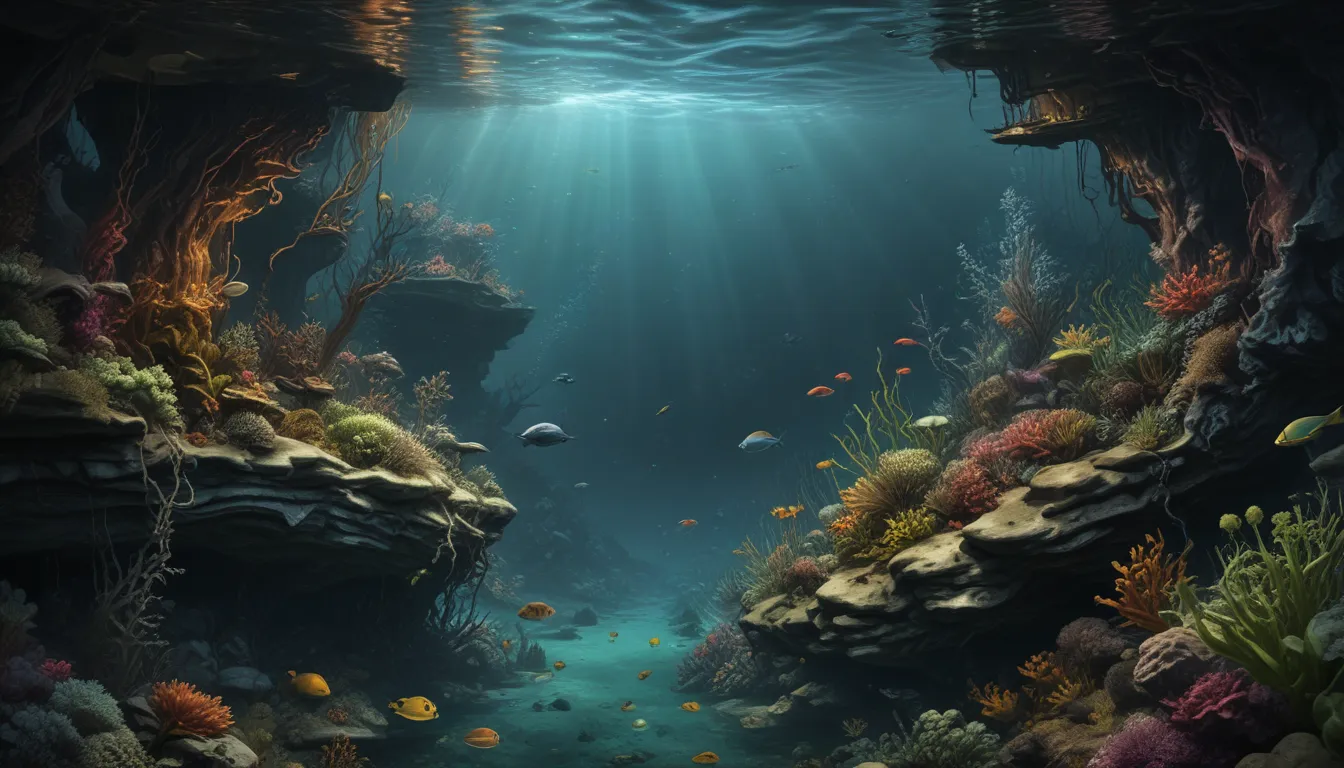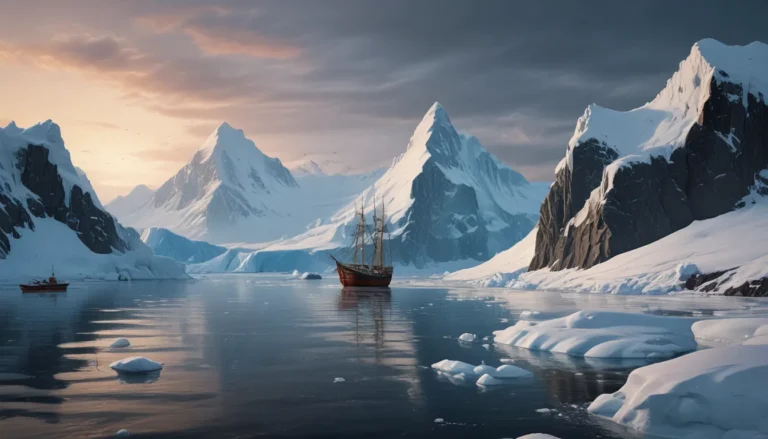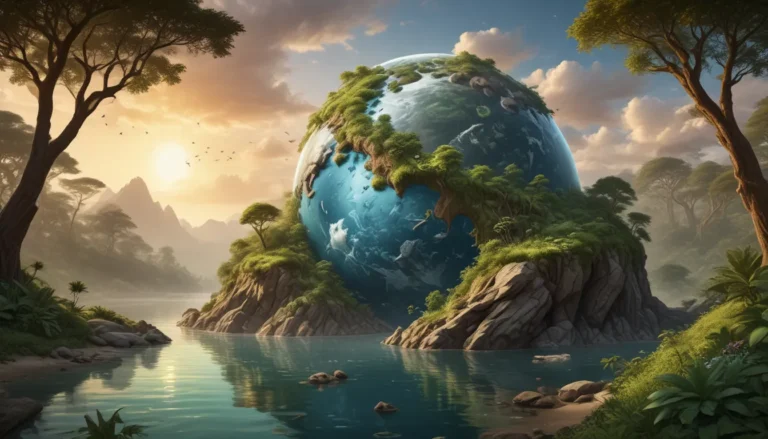A Note About Images: The images used in our articles are for illustration purposes only and may not exactly match the content. They are meant to engage readers, but the text should be relied upon for accurate information.
Are you ready to dive into the mysterious world of the benthic zone? This fascinating realm at the bottom of bodies of water is teeming with life, unique geological features, and untapped potential. From deep-sea creatures to hydrothermal vents, there is so much to discover about this hidden underwater jungle. Join us on a journey to uncover 10 incredible facts about the benthic zone and its vital role in sustaining life on Earth.
The Benthic Zone: A World of Wonder
The benthic zone, also known as the bottom zone, is the lowest level of a body of water, encompassing the seafloor, lakebed, or riverbed. This mysterious abyss is home to a diverse array of organisms that have adapted to survive in extreme conditions. From the abyssal plains to hydrothermal vents, the benthic zone holds countless secrets waiting to be explored.
A Diverse Habitat for Countless Organisms
The benthic zone is a bustling ecosystem, with organisms ranging from microscopic bacteria to massive deep-sea creatures. These inhabitants have evolved unique adaptations to thrive in harsh environments characterized by high pressure, limited sunlight, and scarce nutrients. It’s a world of resilience and survival against all odds.
Unveiling the Abyssal Plains: Flat and Endless
One of the mesmerizing features of the benthic zone is the abyssal plains, vast expanses of flat and featureless seafloor. Covered in fine sediment like clay, silt, and sand, these plains make up a significant portion of the ocean floor. Their seemingly endless stretches are home to a variety of benthic organisms, contributing to the rich biodiversity of the underwater world.
Hydrothermal Vents: Nature’s Underwater Geysers
Among the most captivating aspects of the benthic zone are hydrothermal vents, formed by volcanic activity beneath the seafloor. These vents release hot water rich in minerals, creating unique ecosystems where species thrive in extreme conditions. These otherworldly landscapes are a testament to the resilience and adaptability of life in the deep sea.
The Benthic Zone and Climate Research
Scientists study the benthic zone to unravel the mysteries of past climate patterns. By analyzing sediment layers on the ocean floor, researchers can glean valuable insights into temperature fluctuations, carbon dioxide levels, and the Earth’s climate history. The benthic zone serves as a window into our planet’s climatic past, offering clues to better understand the forces shaping our world.
Benthic Fauna: Masters of Adaptation
The organisms inhabiting the benthic zone have honed remarkable adaptations to survive in their challenging environment. From bioluminescence to high-pressure tolerances, these creatures showcase the incredible diversity of life under the sea. Their unique traits and behaviors shed light on the fascinating evolutionary processes at play in this underwater realm.
Threats to the Benthic Zone: Human Impact
Unfortunately, human activities pose a significant threat to the delicate balance of the benthic zone. Pollution, overfishing, and deep-sea mining can disrupt or destroy these unique ecosystems, leading to irreparable damage. Conservation efforts are crucial to safeguarding the benthic zone and preserving its ecosystems for future generations.
Conservation Efforts: Protecting Fragile Ecosystems
Recognizing the importance of the benthic zone, conservation organizations and researchers are actively working to protect these vital habitats. Initiatives like establishing marine protected areas, promoting sustainable fishing practices, and raising awareness about the value of biodiversity conservation are essential steps in preserving the benthic zone for the future.
Unlocking Medical Discoveries in the Depths
The benthic zone holds untapped potential for medical discoveries, with many organisms producing unique compounds that show promise in developing new medicines. From antibiotics to anti-cancer drugs, the bioactive substances found in the depths of the benthic zone offer a treasure trove of possibilities for pharmaceutical research. By exploring these hidden depths, scientists may discover novel treatments that benefit human health.
Deep-Sea Exploration: Pushing Boundaries of Discovery
The exploration of the benthic zone continues to push the boundaries of human knowledge and understanding. Whether through manned submersibles or remotely operated vehicles, scientists and explorers are venturing into the depths to uncover the secrets and wonders that lie beneath the surface. Each expedition brings new insights and discoveries, expanding our understanding of the benthic zone and its vital role in sustaining life on Earth.
Conclusion: Embracing the Mysteries of the Benthic Zone
In conclusion, the benthic zone is a captivating realm filled with wonders and mysteries waiting to be explored. From its unique inhabitants to its vital role in ecosystem function, the benthic zone offers a wealth of opportunities for scientific discovery and conservation efforts. By understanding and protecting this underwater world, we can ensure a sustainable future for our planet and the diverse life it supports. So, dive into the depths of the benthic zone and unravel its secrets – you never know what fascinating discoveries await!
FAQs: Answering Your Questions About the Benthic Zone
- What is the benthic zone?
-
The benthic zone refers to the lowest level of a body of water, including the sediment and the organisms that inhabit it.
-
What are some examples of benthic organisms?
-
Benthic organisms include sea stars, crabs, worms, and corals, among many others.
-
How deep is the benthic zone?
-
The depth of the benthic zone varies depending on the body of water, extending from the shoreline to the deepest parts of the ocean.
-
What role does the benthic zone play in the marine ecosystem?
-
The benthic zone plays a crucial role in nutrient cycling, sediment stabilization, and providing habitat for diverse organisms.
-
How do human activities impact the benthic zone?
-
Human activities such as pollution, overfishing, and habitat destruction have detrimental effects on the benthic zone, impacting ecosystem health and biodiversity.
-
How do scientists study the benthic zone?
-
Scientists use various methods like underwater vehicles, sediment sampling, and remote sensing technologies to study the benthic zone and its inhabitants.
-
Are there unique adaptations among benthic organisms?
-
Yes, benthic organisms have evolved unique adaptations like bioluminescence and specialized feeding structures to thrive in their environment.
-
Can the benthic zone be found in freshwater ecosystems?
-
Yes, the benthic zone exists in both marine and freshwater ecosystems, each with its own set of organisms and characteristics.
-
Are there endangered species in the benthic zone?
-
Yes, several species inhabiting the benthic zone are endangered, highlighting the importance of conservation efforts to protect these vulnerable organisms.
-
Can recreational activities be enjoyed in the benthic zone?
- Recreational activities like scuba diving and snorkeling offer unique opportunities to explore the benthic zone, but it’s essential to do so responsibly to minimize impacts on the ecosystem and its inhabitants.
At Anambas Foundation, we are committed to providing trustworthy and engaging content that celebrates the wonders of our natural world. Our dedication to quality and authenticity ensures that each fact we share is not only fascinating but also credible. Join us in our exploration of the benthic zone and discover the marvels that lie beneath the surface.






